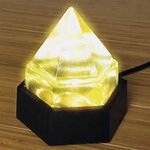T
treez
Guest

Hello,
Please help us because we must now scrap our product because the LEDs are going obsolete.
..Our LED lamp product is based on these 63V, 40mA LEDs (SAW09H0A & SAW09A0A)
SAW09H0A
http://www.mouser.com/ds/2/363/SAW09H0A-334993.pdf
SAW09A0A
http://www.seoulsemicon.com/upload2/MJT4040_SAW09A0A_Rev2.0.pdf
Unfortunately these LEDs are about to go obsolete. Our boss now says that the entire product will have to be scrapped, because in order to continue it, the optic and LED PCB would have to be re-designed to accommodate whichever new replacement LEDs might be useable. He says that this would cost a massive amount of money, and that therefore the product must simply be scrapped. Is this right? The cost of getting a new optic (arrangement of lenses molded into a transparent Perspex sheet which covers the LEDs) is that hugely expensive?
The following LED could replace the SAW09H0A…..
Luxeon 3014
http://www.lumileds.com/uploads/459/DS208-pdf
Please help us because we must now scrap our product because the LEDs are going obsolete.
..Our LED lamp product is based on these 63V, 40mA LEDs (SAW09H0A & SAW09A0A)
SAW09H0A
http://www.mouser.com/ds/2/363/SAW09H0A-334993.pdf
SAW09A0A
http://www.seoulsemicon.com/upload2/MJT4040_SAW09A0A_Rev2.0.pdf
Unfortunately these LEDs are about to go obsolete. Our boss now says that the entire product will have to be scrapped, because in order to continue it, the optic and LED PCB would have to be re-designed to accommodate whichever new replacement LEDs might be useable. He says that this would cost a massive amount of money, and that therefore the product must simply be scrapped. Is this right? The cost of getting a new optic (arrangement of lenses molded into a transparent Perspex sheet which covers the LEDs) is that hugely expensive?
The following LED could replace the SAW09H0A…..
Luxeon 3014
http://www.lumileds.com/uploads/459/DS208-pdf


